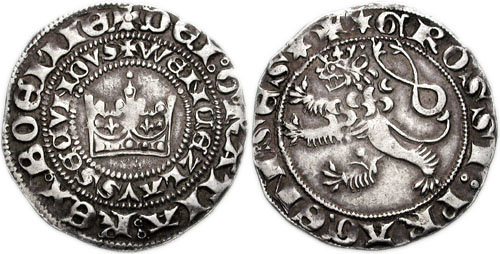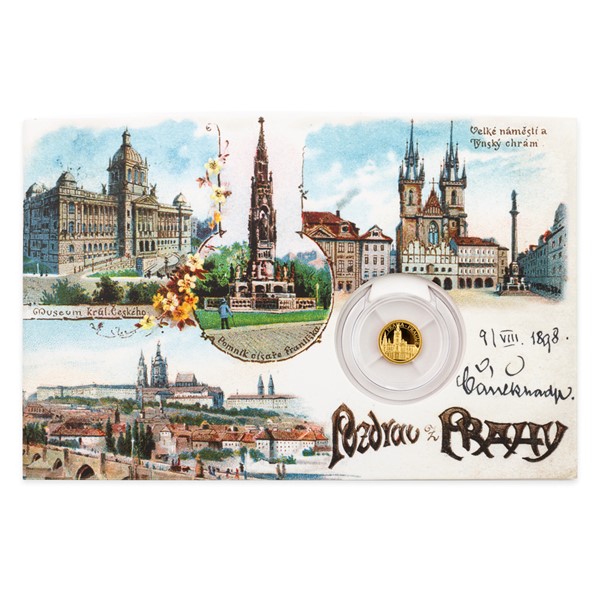Great Ideas On Laser Processing Prague Mint Coins
How And Why Do You Use A Model Of A Plaster To Create A 3d Digital Model Of Gold Medals Or Coins?Scanning a model made of plaster to create a digital 3D model for gold coins or medals requires specially designed equipment to record the maquette's physical details and dimensions in the digital format. This digital replica is used in a variety of ways throughout the production.
3D Scanning 3D scanners with high-resolution are utilized to capture all details and dimensions of the model. The scanners employ various techniques like laser scanning and structured light to capture exact dimensions and geometrical shapes.
Capturing information about the surface- The scanner emits light beams or lasers at the model. The reflections or distortions caused by these beams are captured by the scanner, capturing the model's surface information.
Data Collection - As the scanner travels across the surface of the model, it collects a vast amount of data points, which creates a digital representation of the model's shape as well as contours and other details.
Conversion into 3D Model- The collected data points are processed by special software that converts the information into a 3D digital model. This model reproduces the physical properties and dimensions of a maquette made of plaster.
There are a variety of reasons to make a 3D digital model
Digital 3D models are precise in reproducing the dimensions and details of real models. It is crucial to keep this precision to make sure that the design and style of the gold medal or coin is in line with the original.
Digital models can easily be modified or upgraded. Designers can modify the 3D models without changing their initial plaster model.
Compatible with manufacturing processes Digital 3D designs are compatible with various manufacturing techniques like CNC machining or 3D Printing, making it easier to produce molds or dies for the mass production.
Documentation and Archiving Digital 3D models are an archived record of the design. They can be saved digitally to be used in the future for references, reproductions, or historical documentation purposes.
By scanning a plaster model and creating a precise digital 3D model, producers and designers are able streamline production, improve accuracy, and use modern manufacturing techniques to create gold-plated coins and medals with accuracy. Take a look at the most popular Scanning and 3D Modeling Czechoslovakia gold medals website info. including 1oz gold price today, golden and silver, gold coin 24k price, buy gold coins near me, buy silver & gold, twenty dollar gold coin, 1 10 gold eagle, 100 gm gold biscuit, mexican gold coins, gold bullion cost and more.

What Does An Janvier Machine Transfer The Design Of The Gold Coin To A Working Hub?
A Janvier is also known under the name pantograph or reduction machine, is employed to transfer designs for a medal or coin from a master hub to a working hub. The Master Hub Creation is explained in this video.
The master hub is the primary coin, medal or coin mold. It is usually made using CNC machine or other precise methods to ensure precision.
Janvier Machine - Setup
The Janvier Machine is comprised of two components: a stylus to trace the design and a cutting tool which cuts the design.
The hub master is securely fixed to the Janvier machine, serving as the template from which the design will be transferred.
Tracing a Design
The Janvier machine's stylus records the contour of the design as it moves along the hub's surface. The stylus on the Janvier machine keeps track of the profile when it moves on the surface.
Reducing Design-
The Janvier machine can also reproduce the pattern that was traced onto the hub that is in use. The hub is usually composed of softer materials like nickel or steel, as opposed to the hub used in the master.
The cutting tool reduces or copies the design onto the hub of the working wheel in a smaller dimension or size compared to the hub that is the master hub. This reduction is essential for the coining process as it allows coins or medals to be made at the desired sizes.
Precision and Accuracy
The Janvier machine operates precisely to ensure an exact transfer of the layout from the master hub to the operating hub. It faithfully reproduces even the most intricate details and contours.
Quality Control
Inspections and quality checks are performed to verify that the design transferred matches the requirements and accuracy needed to strike the design.
Further Processing
The Janvier machine's working hub can be used to strike coins or medals. It's used as a mold or die to create multiple blank coins or medals with the design transferred.
Janvier's machine is essential in the coining process. It allows for the precise replication and reduction of a master to working hubs for intricate designs. These hubs will be used to create mass production of coins or other medals by using the strike process. See the top janvier processing Czechoslovakia gold medals site tips. including gold quarter, ebay gold coins, gold coins for sale near me, st gaudens double eagle, buy gold coins, coin gold price today, small gold coins, gold coins and bullion, 1 ounce gold bullion, 1933 double eagle and more.

What Ways Can Gold Coins Or Medals Undergo Coating Procedures To Shield The Metal?
The coating process can be utilized to safeguard, improve the appearance, or achieve specific aesthetic effects. Here are the various coating methods that are used to protect Coatings-
Clear Protective Coating (Varies)Clear protective coating, such as lacquer, or a polymer that is specially designed can be used to protect the surface against the effects of tarnishing, oxidation or scratches. The coating helps protect the metal that is beneath the medal or coin and aids in maintaining the original look of the item.
Enhancement of Appearance
Gilding and plating with gold: Coins and gold medals can be plated using a thin gold layer. The item will appear more expensive and lustrous.
Aesthetic Effects
Patina or Antique finishes - Chemical treatments or special coatings are used to achieve an antique-looking finish. This creates an appearance of aged and oxidized.
Coloration or Coloring - Certain coins or medals are colored specifically in certain areas using enamels, coatings or special coatings. These colors can be utilized to emphasize certain features or to create contrast.
Anti-Tarnish Coatings-
Anti-Tarnish Solutions: For coins or medals that have intricate designs or surfaces susceptible to tarnishing, anti-tarnish coats or solutions might be applied. These coatings are made to keep the metal from oxidizing or discoloring in time.
Specialized Coatings For Security Or Identification
UV-Reactive or luminescent Coatings- Some medals or coins may contain special coatings that respond to UV light and reveal hidden or encrypted elements to ensure security or authenticate.
Selective Coatings for Contrast
Selective Coating Removing- Sometimes the coating is removed selectively from specific areas of a coin or medal to provide contrast between polished and coated surfaces. This highlights the design features.
Each coating has a reason for being there. It might be to safeguard the metal or improve its appearance. It can also provide security features. These coatings have a significant impact on the aesthetic appeal and durability of gold coins or medals which can increase their value and appeal to collectors and enthusiasts. View the most popular coating Prague Mint gold coins website examples. including st gaudens double eagle, liberty head nickel, 10 dollar gold coin, 24k gold coins prices, gold morgan dollar, 1 10 oz gold eagle, gold one dollar coin, gold silver dealers, canadian gold maple leaf coin, coin gold silver and more.

What Is The Reason Behind Some Gold Medals Or Coins Altered To Give Them An Aged Or Antique Look?
Gold medals or coins can undergo processes to produce an aged or antique look for various reasons, including aesthetic preferences, historical significance, or even collector demand. This is how and why it's done.
Chemical patination. The medal or coin is treated using acid or solution to create patina. The solutions cause controlled oxidation, or tone, which gives the medal or coin an antique or aged look. This process accentuates the particulars and adds depth to an image.
Artificial Aging. Mechanical and chemical methods are employed to simulate natural oxidation. Abrasive tools or treatments can be used to create scratches, scuffs, or worn areas, giving the coin or medal an aged look.
Toning and Staining: Specific solutions, also known as heating treatments are used to tone or stain the surfaces. The result is a variety of hues or shades. This can be replicated by the discoloration, toning, and fading that happens naturally with time.
Polishing, Buffing and Buffing Techniques Certain areas can be chosen for a specific buffing process to eliminate surface highlights or layers. This can create contrast and give the appearance that wear has occurred.
There are a variety of reasons to make an antique look
Aesthetic appeal - Some collectors prefer medals and coins that have an aged look due to their visual appeal. The worn-out look creates character, depth, uniqueness, and also makes it attractive visually.
Historical or Commemorative Importance - Coins and Medals which commemorate historical events or period may be seasoned to convey a sense or authenticity, or to replicate coins of a particular era.
The older the coins or medals, they are more desirable. This is due to collectors looking for limited edition or unique items. Their aged appearance can increase their collectible value.
Highlighting design featuresThe process of aging can reveal the intricate design details by creating contrast in areas that are raised or recessed, making the design elements more apparent.
Minting Artistic Expression- Minting experts or artists can utilize aging techniques to create an artistic expression, adding depth, storytelling, or symbolism to the design.
A deliberate artistic choice, creating an antique finish on gold medals or coins can bring back memories or create visual interest. It also can provide a sense of history. It's important to maintain the authenticity of the coin and its intrinsic value, while maintaining an aesthetic appearance. Take a look at the best antique finish of Czechoslovakia gold coins more advice. including 1933 double eagle, 5 dollar gold coin, gold bullion bars, sacagawea gold dollar, gold bullion bars for sale, 50 pesos gold coin, gold biscuit buy, 10 dollar gold coin, gold silver coins, gold quarter 2000 and more.
